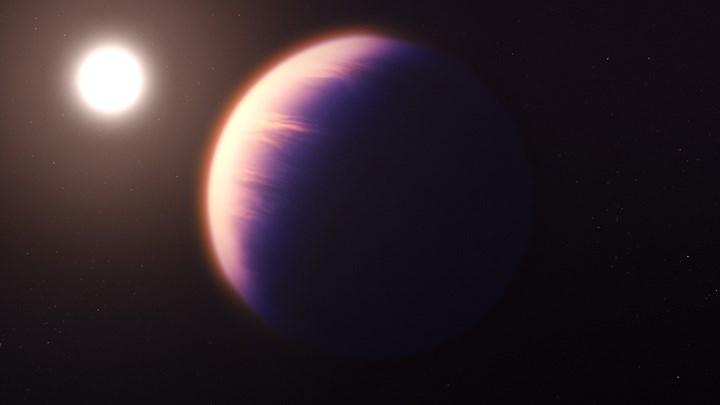 The James Webb Space Telescope, or JWST, proved its capabilities by making a name for itself with images it sent from space. However, it seems that JWST is just at the beginning. The telescope has captured the first definitive evidence of carbon dioxide in the atmosphere of a planet outside the Solar System.
The James Webb Space Telescope, or JWST, proved its capabilities by making a name for itself with images it sent from space. However, it seems that JWST is just at the beginning. The telescope has captured the first definitive evidence of carbon dioxide in the atmosphere of a planet outside the Solar System.Explaining that they found evidence of chemical reactions in the atmosphere of an exoplanet 700 light years away from Earth, scientists examined the planet WASP-39b. The findings not only provide promising clues about how the exoplanet formed, but also herald future discoveries of JWST.
Using the James Webb Space Telescope, researchers were able to create a detailed chemical portrait of the scorching gases swirling around exoplanet WASP-39b. This “hot Saturn” planet orbits extremely close to its host star, causing temperatures on the planet to rise as high as 900 degrees Celsius. Additionally, WASP-39b’s mass is approximately one-fourth that of Jupiter, while its size is 1.3 times as large.
Carbon dioxide found definitively for the first time
 WASP-39b is not actually a newly discovered planet. The planet, first discovered by ground-based observations, was later detected by NASA’s Spitzer Space Telescope, which was in operation between 2003 and 2020. NASA’s observations suggested that there may be carbon dioxide in the planet’s atmosphere, but all investigations were inconclusive. But now there is JWST and it is possible to make precise investigations with its advanced tools, which actually happened. Using Webb’s NIRSpec, NIRCam and NIRISS instruments, the researchers observed the planet’s atmosphere in detail.
WASP-39b is not actually a newly discovered planet. The planet, first discovered by ground-based observations, was later detected by NASA’s Spitzer Space Telescope, which was in operation between 2003 and 2020. NASA’s observations suggested that there may be carbon dioxide in the planet’s atmosphere, but all investigations were inconclusive. But now there is JWST and it is possible to make precise investigations with its advanced tools, which actually happened. Using Webb’s NIRSpec, NIRCam and NIRISS instruments, the researchers observed the planet’s atmosphere in detail.Observations found that the planet’s atmosphere contains sodium, potassium, carbon monoxide, and water vapor. This information also confirmed previous assumptions. On the other hand, sulfur dioxide was also found for the first time in the atmosphere of an exoplanet.
These molecules in the planet’s atmosphere essentially point to a process similar to that found in Earth’s ozone layer, as sulfur dioxide is formed as a result of chemical reactions caused by light from the star. However, the exoplanet’s strong carbon dioxide signal indicates that it is enriched with elements heavier than the hydrogen and helium that typically form stars. But why and how this happened, and how it gained these gases when it was so close to its star, remains a mystery.
Further investigations will be made
 “This is where the story starts to get interesting,” says astronomer Natalie Batalha of the University of California, Santa Cruz (UCSC), who leads Webb’s Transiting Exoplanet Early Release Science team. When WASP-39b was young, it may have been bombarded by comets and asteroids with heavier elements such as carbon and oxygen. Interestingly, the exoplanet appears to have the same amount of heavy elements as Saturn, which astronomers think is undergoing a violent youth.
“This is where the story starts to get interesting,” says astronomer Natalie Batalha of the University of California, Santa Cruz (UCSC), who leads Webb’s Transiting Exoplanet Early Release Science team. When WASP-39b was young, it may have been bombarded by comets and asteroids with heavier elements such as carbon and oxygen. Interestingly, the exoplanet appears to have the same amount of heavy elements as Saturn, which astronomers think is undergoing a violent youth.Another thought is that WASP-39b formed from materials in the cold outer parts of the planetary system and then migrated to the inner parts of the system it was in. The answers to all these questions and more detailed results will be revealed when more detailed analyzes are made.